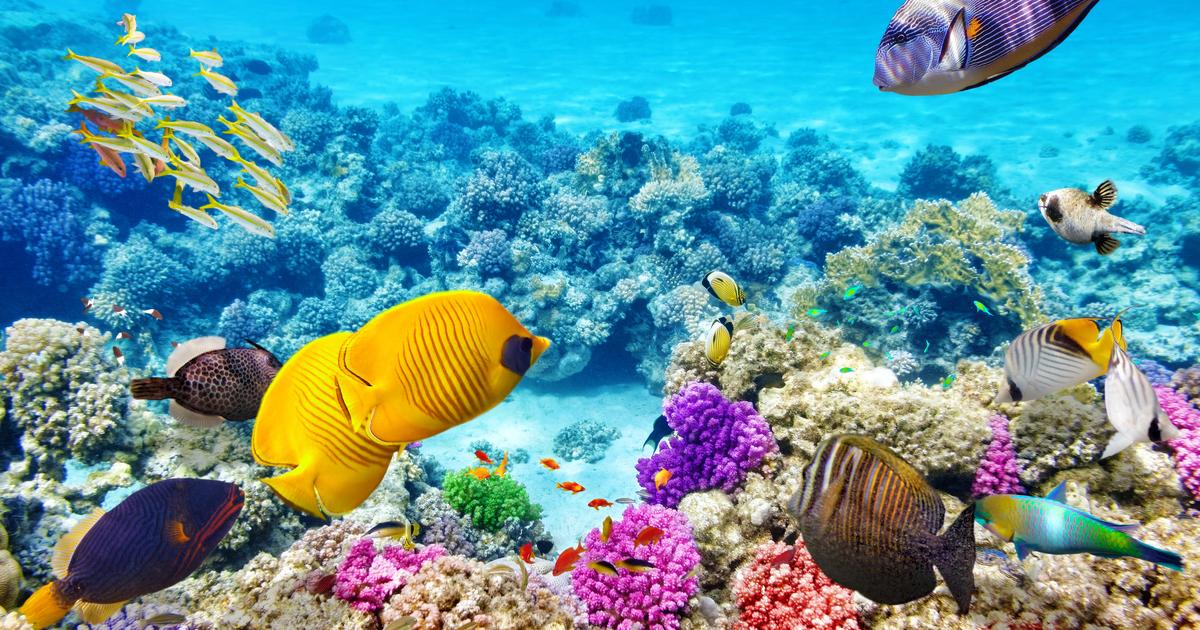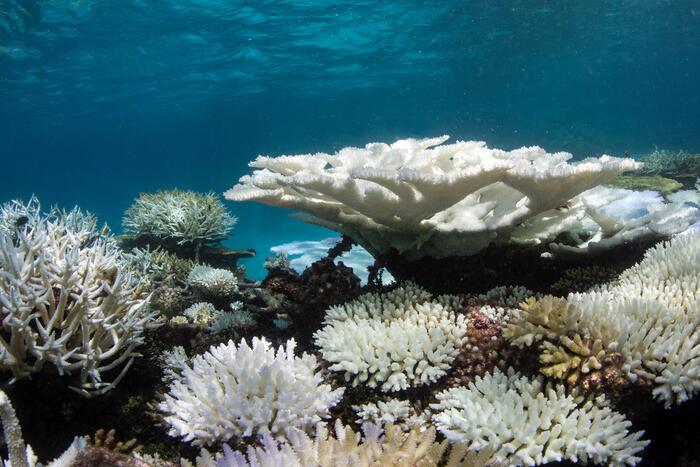Scientists implement "hydrophones" to monitor coral reefs 1:28
(CNN) --
Parts of the Great Barrier Reef have seen the most coral cover since the Australian Institute of Marine Sciences (AIMS) began tracking 36 years ago, according to a report published this Thursday.
An AIMS study of 87 reefs found that between August 2021 and May 2022, average hard coral cover in the upper and mid-reef regions increased by about a third.
This is unusual good news for the world-famous reef, which suffered its sixth mass bleaching in March.
91% of the reefs studied in the Great Barrier Reef lose their color
AIMS CEO Dr. Paul Hardisty said the results in the northern and central regions were a sign that the reef could still recover from massive bleaching and outbreaks of coral-feeding starfish.
However, he stressed that the loss of coral cover in other parts of the reef suggests that it remains susceptible to threats, such as marine heat waves.
The report adds that, due to climate change, these disturbances, which could reverse advances in coral growth, are likely to become more frequent and longer lasting.
Dr. Mike Emslie, AIMS monitoring program team leader, said most of the increase was due to fast-growing Acropora corals, which are "particularly vulnerable" to coral bleaching, damage from the waves of tropical cyclones and to be preyed upon by starfish.
advertising
Coral at Stanley Reef, about 130 kilometers from Townsville in Queensland, is showing signs of bleaching.
"This means that large increases in hard coral cover can be quickly wiped out by disturbance on reefs where Acropora corals predominate," Emslie said.
Cherry Muddle, head of the Great Barrier Reef campaign for the Australian Marine Conservation Society, warned that while the report was a sign of progress, the reef was still in danger.
"While this growth is positive and shows that the reef is dynamic and can be resilient, it does not rule out the fact that the reef is under threat," Muddle told CNN.
"Delay means death": We are running out of ways to adapt to the climate crisis, according to a new report.
These are the main conclusions
A reef in danger
Four of the six mass reef bleaching events have occurred since 2016. The most recent occurred in March this year, with 91% of reefs surveyed affected by bleaching, according to the Great Barrier Reef Marine Park Authority. (GBRMPA).
This is significantly more widespread than the previous time, when around a quarter of the assessed reef showed signs of severe bleaching in 2020.
This is the biggest threat to Australia's Great Barrier Reef 1:01
In a May report, the GBRMPA warned that "reef-disturbing events are becoming more frequent."
Bleaching is the result of warmer-than-normal water temperatures, which trigger a stress reaction in the corals.
However, according to GBRMPA scientists, this year's coral bleaching was the first time it had occurred during La Niña, a weather phenomenon often characterized by cooler-than-normal temperatures in the equatorial Pacific Ocean.
According to Jodie Rummer, associate professor of marine biology at James Cook University in Townsville, the frequency of mass bleaching events is cause for concern.
"Even the most robust corals take almost a decade to recover. So we're missing that recovery window," Rummer told CNN in March.
"We're having consecutive bleaching events, consecutive heat waves. And the corals are not adapting to these new conditions."
Many public figures, including "Aquaman" actor Jason Momoa and ocean explorer Philippe Cousteau, have called on UNESCO to add this natural wonder to its "endangered" list in the hope that this will spur action to save the reef
Australia's responsibility
For years, Australia has been criticized for its dependence on fossil fuels.
However, the country's new prime minister, Anthony Albanese, has promised to take more steps to reduce emissions.
On Thursday, Australia's lower house passed a bill to enshrine the government's commitment to cut Australia's emissions by 43% by 2030, though it still needs Senate approval.
However, experts say that a 43% cut in emissions is still insufficient to avoid worsening the effects of climate change and further damage to the Great Barrier Reef.
"In Australia, to do our part, we really need to reduce our emissions by 75% by 2030 and that's to keep global warming below 1.5°C, which is the critical threshold for coral reef survival. as we know it," Muddle told CNN.
"We can create jobs and protect the reef if we adopt clean energy technologies and stop all new coal and gas development," he added.
"There is momentum in the right direction, but we need to see action, like bold action, and we need to see it now."
Great Barrier Reef













/cloudfront-eu-central-1.images.arcpublishing.com/prisa/KMEYMJKESBAZBE4MRBAM4TGHIQ.jpg)

